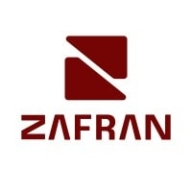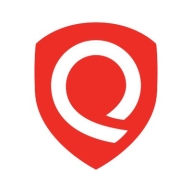


SentinelOne Singularity Identity and Qualys CyberSecurity Asset Management compete in the cybersecurity software domain. SentinelOne seems to have the upper hand due to its advanced AI-driven threat detection and prevention capabilities.
Features: SentinelOne Singularity Identity is recognized for its AI-driven detection, behavioral analysis, and dynamic threat detection, providing comprehensive endpoint protection. It also features a unified console for enhanced risk visibility. Qualys CyberSecurity Asset Management focuses on asset discovery and management, delivering detailed inventory insights and automated vulnerability scanning. Its ability to categorize and manage software effectively stands out, despite lacking some real-time protection capabilities.
Room for Improvement: SentinelOne Singularity Identity needs enhancement in endpoint customization, web filtering, and support responsiveness. Users have reported challenges with policy precision, agent updates, and license management. Qualys CyberSecurity Asset Management would benefit from better interface usability, dynamic tagging, and integration capabilities. Improvements in reporting flexibility, scan durations, and asset tracking efficiency are needed.
Ease of Deployment and Customer Service: SentinelOne Singularity Identity operates mainly on public cloud environments and is known for its responsive customer support, especially in higher-tier options. Qualys CyberSecurity Asset Management provides deployment flexibility across public and hybrid cloud environments. SentinelOne’s technical support is praised for its responsiveness, whereas Qualys requires improved support for complex scenarios.
Pricing and ROI: SentinelOne Singularity Identity is valued for its cost-effectiveness relative to features but is noted for less competitive pricing in certain segments. Despite recurring price increases, it offers significant ROI through threat prevention. Qualys CyberSecurity Asset Management is perceived as expensive, particularly due to its add-on nature, but larger enterprises find it cost-effective because of its asset management features. ROI is evidenced by SentinelOne's threat prevention and Qualys' extensive asset visibility.



Zafran Security integrates with existing security tools to identify and mitigate vulnerabilities effectively, proving that most critical vulnerabilities are not exploitable, optimizing threat management.
Zafran Security introduces an innovative operating model for managing security threats and vulnerabilities. By leveraging the threat exposure management platform, it pinpoints and prioritizes exploitable vulnerabilities, reducing risk through immediate remediation. This platform enhances your hybrid cloud security by normalizing vulnerability signals and integrating specific IT context data, such as CVE runtime presence and internet asset reachability, into its analysis. No longer reliant on patch windows, Zafran Security allows you to manage risks actively.
What are the key features of Zafran Security?
What benefits can users expect from Zafran Security?
In industries where security is paramount, such as finance and healthcare, Zafran Security provides invaluable protection by ensuring that only exploitable vulnerabilities are addressed. It allows entities to maintain robust security measures while allocating resources efficiently, fitting seamlessly into existing security strategies.
Qualys CyberSecurity Asset Management provides advanced real-time asset visibility, dynamic tagging, and External Attack Surface Management. It streamlines asset discovery and management using cloud agents and IP-based scanning, enhancing risk management and software lifecycle tracking.
Qualys CyberSecurity Asset Management offers a comprehensive solution for managing asset inventories and tracking software lifecycle states. It facilitates network visibility and supports zero-day vulnerability solutions, enhancing security posture through efficient monitoring. Users benefit from its cloud-based interface, which provides in-depth asset configurations and insights. Key features include automated vulnerability scanning and unauthorized software management, reducing manual efforts. The platform also emphasizes the importance of timely remediation and ongoing risk mitigation across multiple environments. Despite its strengths, users note the need for enhanced integration with additional CMDBs beyond ServiceNow, as well as cost efficiency improvements. Requests also include better report customization, more scan control, and a simplified UI.
What are the key features of Qualys CyberSecurity Asset Management?In industries like finance, healthcare, and manufacturing, Qualys CyberSecurity Asset Management enhances asset control by offering visibility into hardware and software configurations. It aids in maintaining security compliance and identifying unauthorized software, crucial for sectors with strict regulatory requirements.
Singularity Identity, a component of the Singularity platform, provides threat detection & response (ITDR) capabilities to defend Active Directory and domain-joined endpoints in real-time from adversaries aiming to gain persistent, elevated privilege and move covertly. Singularity Identity provides actionable, high-fidelity insight as attacks emerge from managed and unmanaged devices. It detects identity misuse and reconnaissance activity happening within endpoint processes targeting critical domain servers, service accounts, local credentials, local data, network data, and cloud data. On-agent cloaking and deception techniques slow the adversary down while providing situational awareness and halting adversarial attempts at lateral movement. Singularity Identity helps you detect and respond to identity-based attacks, providing early warning while misdirecting them away from production assets.
Singularity Identity’s primary use case is to protect credential data and disrupt identity-based attacks. The most valuable function of Singularity Identity is its ability to misdirect attackers by providing deceptive data to identity-based recon attacks. Additionally, it can hide and deny access to locally stored credentials or identity data on Active Directory domain controllers.
Singularity Identity also provides rapid detection and respond to identity attacks, capturing attack activity and feeding it directly to the Singularity platform’s Security DataLake for enterprise-wide analysis and response.
By implementing Singularity Identity, organizations benefit from enhanced security, reduced credential-related risks, and improved user productivity. It detects and responds to identity-based attacks, ensuring only authorized individuals can access critical identity data. With its cloaking capabilities to hide identity stored locally on endpoints or in the identity infrastructure and it’s ability to provide decoy results to identity-based attacks, organizations can effectively secure their sensitive or privileged identities, resulting in improved overall identity security.
We monitor all Vulnerability Management reviews to prevent fraudulent reviews and keep review quality high. We do not post reviews by company employees or direct competitors. We validate each review for authenticity via cross-reference with LinkedIn, and personal follow-up with the reviewer when necessary.